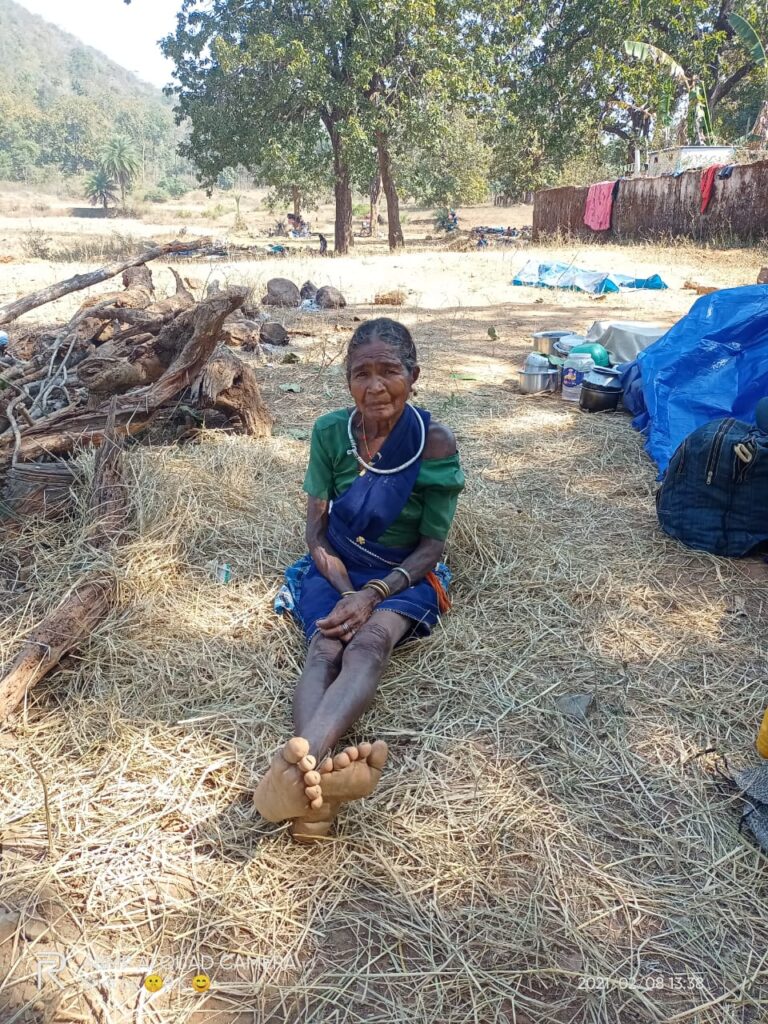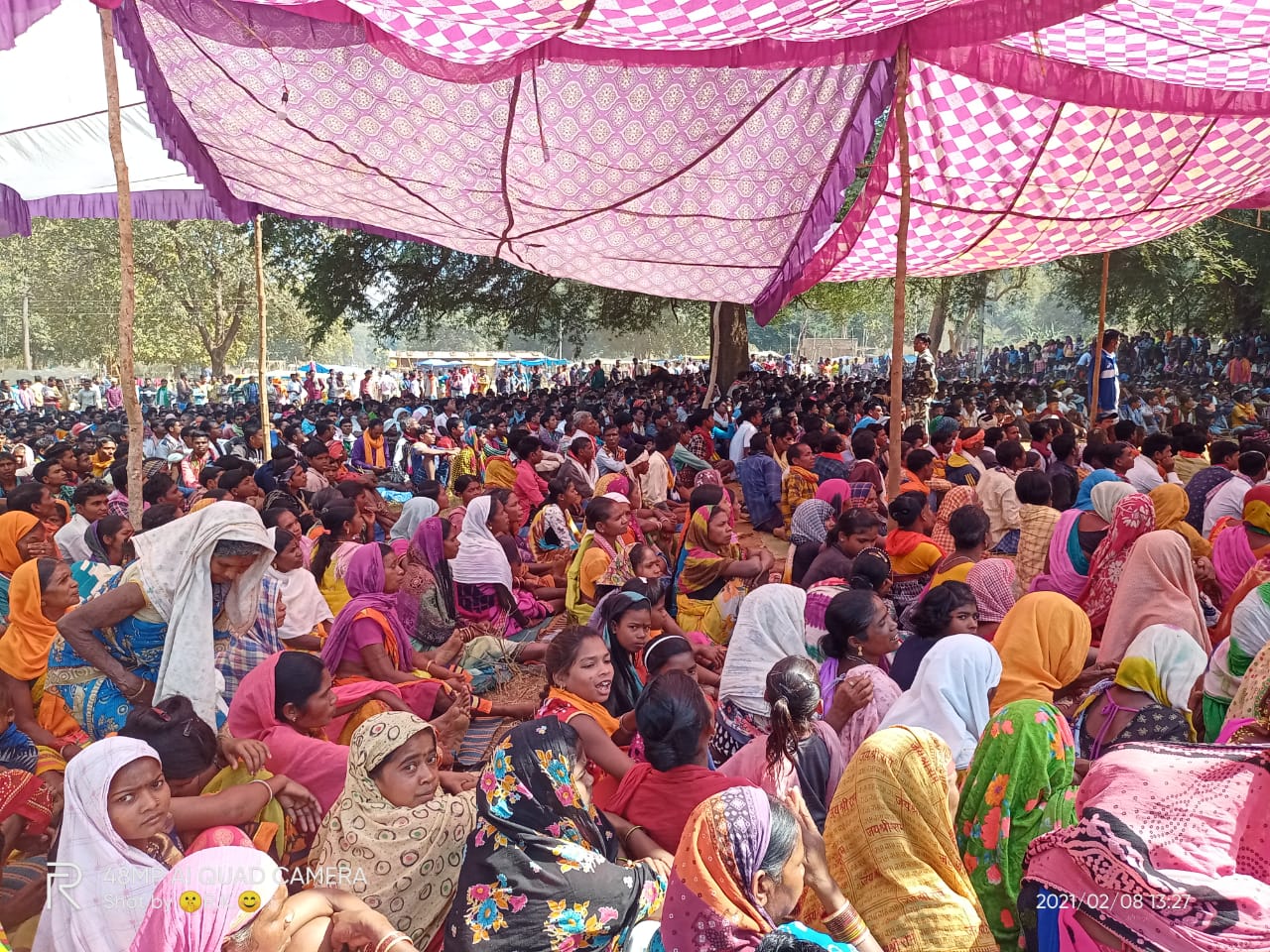After a three-day-long sit-in protest from February 6 to February 8 at Barsur in Dantewada, tribal villagers of south Chhattisgarh have returned to their homes. But, only after strengthening their resolve to oppose the Bodhghat dam project, which has been revived by state chief minister Bhupesh Baghel.
Initially proposed as a hydropower project, the 300 mega watt (MW) Bodhghat multi-purpose dam project on the Indravati river was in cold storage for over four decades. Baghel is now promoting this as an irrigation project to cover 366,580 hectares (ha) of farmland. Last May, the central government gave an in-principle approval for the first phase of this project, which includes a survey of the site and preparation of a detailed project report.
This move of the state government has met with stiff opposition from local tribal communities who claim they are set to lose both their lands and forests. “The three-day dharna by the villagers may be over, but they will continue with their fight against the proposed project,” Arvind Netam, senior tribal leader and a former union minister from the state, told Gaon Connection. He is also a former member of the Lok Sabha and has been following the Bodhghat project for the past 40 years.

“The proposed dam project will affect twenty to twenty five thousand tribal people in about forty four villages of south Chhattisgarh. Of these, thirty villages will be fully submerged. How will these people be rehabilitated? Where is the revenue land?” Netam asked.
In an age of dam de-commissioning & many alternatives to irrigation & power, investing 20k+ crores in redundant #BodhghatDam, jeopardizing livelihoods of adivasis, critical forest & wildlife habitat is unacceptable. @bhupeshbaghel this is not at all in interest of Chhattisgarh! https://t.co/U6LnaXDGx5
— NAPM India (@napmindia) June 10, 2020
Meanwhile, the chief minister recently told the media that Bodhghat was initially a 300 MW hydropower project. But, because of the environmental concerns and related issues, the project was put in cold storage. “But now under the Forest Rights Act, we are giving land to tribal families. Without irrigation, how will they benefit from the land?” asked Baghel.
Also read: Over 12,813 sq km forest land in India under ‘encroachment’. But, who is the ‘encroacher’?
He went on to add that “Bodhghat will be the first dam built on tribal land and whose water will only go to tribal people for irrigation and drinking purposes.”
Bodhghat project
Proposed to be built on the Indravati river, the Bodhghat project is expected to cost Rs 22,653 crore, inform news reports. The dam is expected to come up near Barsur village in Dantewada district and help irrigate 366,580 ha of farmland in Maoist–affected Dantewada, Bijapur and Sukma districts of Bastar division.
The project is also expected to displace over 44 villages — it is believed that 30 of these will be submerged. Apart from this, about 5,704 ha of forests will also be submerged.
बोधघाट परियोजना के विरोध के सम्बंध में आज सातधार के हितालकुडुम में तीन दिवसीय परिचर्चा रखा गया है जिसमें 56 गांवों के ग्रामीण अपने पारम्परिक वेशभूषा और अपने देवी देवताओं के साथ हजारों की संख्या में जुटने लगे हैं । pic.twitter.com/mb7mgSsdCB
— Tameshwar Sinha (@tameshwarsinha2) February 7, 2021
The Bharatiya Janata Party (BJP) has also urged the state government to not go ahead with the project. Last June, in a letter to Ravindra Choubey, state water resources minister, senior BJP leader and former agriculture minister Chandra Shekhar Sahu said the project would displace 40 villages and also damage the local ecology.
“The state government is going ahead with the project, but there is no clarity on its so-called benefit and impact,” Alok Shukla, convenor of Chhattisgarh Bachao Andolan, told Gaon Connection. “The Bodhghat project was proposed and studied in detail in the 1980s when it was a hydropower project. It was rejected on the basis of the environmental damages it posed in terms of loss of forest cover and biodiversity, and the displacement of a large number of tribal villages,” he added.
“None of these concerns has changed in the last forty years. Rather, the importance of forests in the era of global warming and climate change has only increased. Then, why is the government pushing for this project?” asked Shukla.

Pros and cons
According to Baghel, the Bodhghat project is meant to benefit tribal communities who lack income sources and suffer from repeated droughts, malnutrition and poverty. “Bastar region has almost nil irrigation facilities, because of which tribal people cannot farm. Bodhghat will help reach water to their farmlands,” the chief minister told the media. “Those opposing the project are not well-wishers of the tribal people,” he added.
Netam clarified that no one was against irrigation facilities, but the figure of 300,000 ha or 600,00 ha land getting irrigated had no basis. “There is no project report that states how much area will be irrigated. These are just random figures,” he said.
“We tribal people know what our needs are. Why has the government not bothered to speak to the gram sabhas of the to-be affected villages and taken them into confidence before deciding to go ahead?” he asked.

According to Shukla, none of the affected villages approached the state government asking for irrigation facilities. “These are all small and marginal tribal farmers who depend more on their forests than farming for sustenance. The forest economy needs to be strengthened, and forests need to be handed over to the local tribal communities,” he said.
“We must also remember that this is a Fifth Schedule area and under the PESA Act [The Provisions of the Panchayats (Extension to the Scheduled Areas) Act, 1996], the government cannot undertake any project without the consent of the gram sabhas,” Shukla added. Fifth Schedule areas are predominantly tribal regions and spread across Andhra Pradesh, Chhattisgarh, Gujarat, Himachal Pradesh, Jharkhand, Madhya Pradesh, Maharashtra, Odisha, Rajasthan and Telangana.
“We are not anti-development. All we are asking for is that the laws of the land, such as the Forest Rights Act, PESA, and the rehabilitation and resettlement Act be followed in both letter and spirit,” said Netam.


















